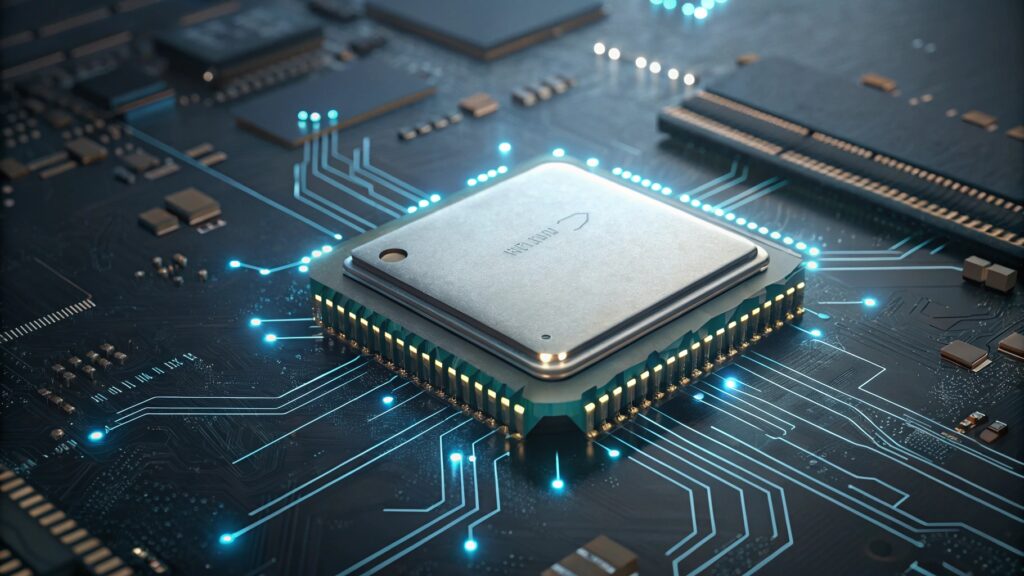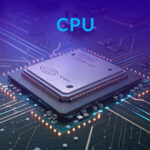
We are living in the 21st century, an era dominated by technology and computers. Today, we perform more than half of our daily tasks using mobile phones and computers. Among the most used electronic devices in modern times, computers and smartphones are at the top. A computer has many components, but one of the most important is the CPU (Central Processing Unit)—often referred to as the brain of the computer. In this article, I’ll explain what a CPU is and how it works.
Introduction
As mentioned, several components are necessary to operate a computer, such as the monitor, mouse, keyboard, and CPU. The CPU is not only present in computers but also in smartphones and various types of gadgets. When buying a new laptop or computer, we often hear about CPU specifications and tend to focus on this component the most. That’s why today I’ll help you clearly understand how the CPU works and its different parts.
What is a CPU (Processor)?
Let’s begin by understanding what a CPU is and then move on to how it works.
CPU stands for Central Processing Unit. It is a type of hardware that helps run applications, software, and programs on a computer. The CPU is a vital part of the system, constantly running the operating system (like Windows or macOS) and other programs. Hence, it is often called the brain of the computer.
The CPU is known by various names:
- Processor
- Central Processor
- Microprocessor
That’s a brief description of what a CPU is. Now let’s see how it actually works.
How Does a CPU Function?
The CPU is a chip attached to the motherboard. This chip is made up of millions or even billions of tiny transistors, which help run computer programs and perform calculations. The CPU handles all major tasks of a computer system—arithmetic operations, logical operations, and input-output processing.
As mentioned before, the CPU is considered the brain of the computer because it receives all hardware or software instructions, processes them, and then delivers results to the user.
Here’s how it works step by step:
- The CPU receives instructions from software or user input.
- These instructions are then processed at an extremely high speed (billions of operations per second) using transistors.
- The CPU sends the output or results based on the processed data to the screen or desired component.
This high-speed processing gives us a sense of how fast a computer can work. The more powerful the CPU, the faster and more efficiently it can handle tasks.
Previously, computers were much slower, but now modern systems come with multi-core processors, significantly boosting performance and allowing tasks to be completed in the blink of an eye.
Tasks Handled by the CPU
The CPU is a general-purpose processor capable of handling all types of tasks. For example:
- Performing mathematical calculations
- Working with Microsoft Word, Excel, or Photoshop
- Listening to music or watching movies
- Browsing the internet
- Playing games
All these tasks are processed through the CPU and displayed for the user.
In simple terms, the processor reads the commands you give and acts accordingly. To do this, it collaborates with other components like:
- RAM (Random Access Memory)
- GPU (Graphics Processing Unit)
- Internal Storage
These components work together with the processor to execute the task successfully.
Conclusion
Hopefully, after reading this article, you now have a clear understanding of what a CPU is and how it works.
Note: Today, many companies manufacture processors such as Samsung, Qualcomm, IBM, Motorola, and Apple. However, Intel and AMD are the most in-demand in the market. These two companies not only produce high-quality processors but are also far ahead in research and innovation, giving them a competitive edge.
If you found this article helpful, don’t forget to leave a comment and share it.
Thank you!We are living in the 21st century, an era dominated by technology and computers. Today, we perform more than half of our daily tasks using mobile phones and computers. Among the most used electronic devices in modern times, computers and smartphones are at the top. A computer has many components, but one of the most important is the CPU (Central Processing Unit)—often referred to as the brain of the computer. In this article, I’ll explain what a CPU is and how it works.
Introduction
As mentioned, several components are necessary to operate a computer, such as the monitor, mouse, keyboard, and CPU. The CPU is not only present in computers but also in smartphones and various types of gadgets. When buying a new laptop or computer, we often hear about CPU specifications and tend to focus on this component the most. That’s why today I’ll help you clearly understand how the CPU works and its different parts.
What is a CPU (Processor)?
Let’s begin by understanding what a CPU is and then move on to how it works.
CPU stands for Central Processing Unit. It is a type of hardware that helps run applications, software, and programs on a computer. The CPU is a vital part of the system, constantly running the operating system (like Windows or macOS) and other programs. Hence, it is often called the brain of the computer.
The CPU is known by various names:
- Processor
- Central Processor
- Microprocessor
That’s a brief description of what a CPU is. Now let’s see how it actually works.
How Does a CPU Function?
The CPU is a chip attached to the motherboard. This chip is made up of millions or even billions of tiny transistors, which help run computer programs and perform calculations. The CPU handles all major tasks of a computer system—arithmetic operations, logical operations, and input-output processing.
As mentioned before, the CPU is considered the brain of the computer because it receives all hardware or software instructions, processes them, and then delivers results to the user.
Here’s how it works step by step:
- The CPU receives instructions from software or user input.
- These instructions are then processed at an extremely high speed (billions of operations per second) using transistors.
- The CPU sends the output or results based on the processed data to the screen or desired component.
This high-speed processing gives us a sense of how fast a computer can work. The more powerful the CPU, the faster and more efficiently it can handle tasks.
Previously, computers were much slower, but now modern systems come with multi-core processors, significantly boosting performance and allowing tasks to be completed in the blink of an eye.
Tasks Handled by the CPU
The CPU is a general-purpose processor capable of handling all types of tasks. For example:
- Performing mathematical calculations
- Working with Microsoft Word, Excel, or Photoshop
- Listening to music or watching movies
- Browsing the internet
- Playing games
All these tasks are processed through the CPU and displayed for the user.
In simple terms, the processor reads the commands you give and acts accordingly. To do this, it collaborates with other components like:
- RAM (Random Access Memory)
- GPU (Graphics Processing Unit)
- Internal Storage
These components work together with the processor to execute the task successfully.
Conclusion
Hopefully, after reading this article, you now have a clear understanding of what a CPU is and how it works.
Note: Today, many companies manufacture processors such as Samsung, Qualcomm, IBM, Motorola, and Apple. However, Intel and AMD are the most in-demand in the market. These two companies not only produce high-quality processors but are also far ahead in research and innovation, giving them a competitive edge.
If you found this article helpful, don’t forget to leave a comment and share it.
Thank you!




Leave a Reply